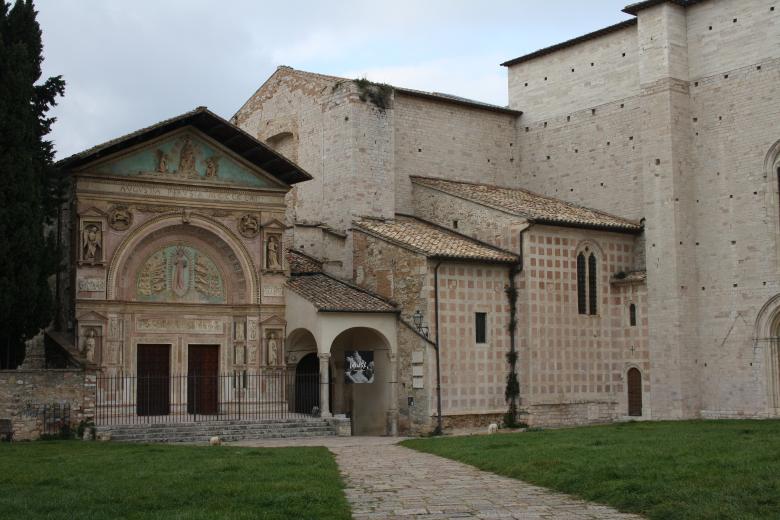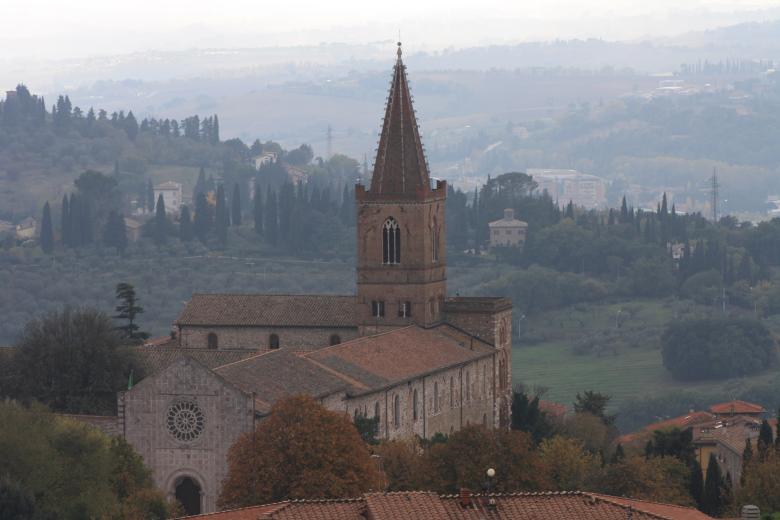With the unification of Italy, the complex became the property of the State, and then passed to several private individuals until 1956, when the Gaslini Foundation of Genoa bought the entire estate (1824 hectares). It still owns the property today.
WHAT TO SEE
The cloister consists of two levels. The first, as written in one of the capitals, was finished under the abbot Oratore (1205-1222), while the second was added in the last decades of the thirteenth century. However, the existence of a cloister was already documented since 1195, and because parts of recovered columns dating back to the 9th – 10th century were used for the construction of the current cloister, it is conceivable that an older cloister might have been present previously.
The crypt is the oldest part of the present abbey structure and probably dates back to the first half of the 11th century. In a niche of the crypt there are some fragments of a fresco dating from the early fourteenth century that probably depicted a Virgin and Child.
- The sala del Capitolo (chapter hall)
The chapter hall was where the monks gathered to settle important questions concerning abbatial life. The room still preserves important frescoes attributed to the painter called the Master of Montelabate, protagonist of Perugia painting of the late thirteenth century. The frescoes show St. Benedict, a Virgin and Child, the patron kneeling, the Crucifixion with the Virgin and St. John.
- The church and its fifteenth-century altars
Between the second half of the 13th century and the beginning of the 14th century, the present church was built, larger and in a higher position than the previous one. With a single nave, divided into three bays and with a polygonal apse, it follows the model of the Upper Basilica of Assisi. The portal and the rose window on the façade are attributed to the workshop of the “Master Embroiderer", so called because of his strong propensity for decorative richness, and who worked on the portal of the lower basilica of Assisi. Fom the 14th century, the church housed important paintings by Meo da Siena and his followers, now preserved in the National Gallery of Umbria. The two side altars, one painted in 1488 by Bartolomeo Caporali, the other attributed to Fiorenzo di Lorenzo in 1492, show a Virgin with Child and Saints and a Crucifixion. The saints depicted, including St. Sebastian and St. Roch, were those usually invoked against the plague.


































.jpeg/0d7d918e-eddd-ed4c-9da2-23a6917261f0?width=780)
